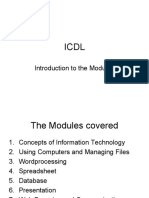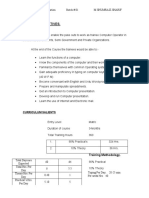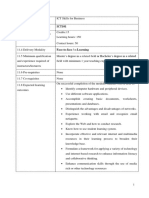0% found this document useful (0 votes)
125 views3 pagesComputer Packages Training Syllabus
The document outlines a 12-week computer packages training syllabus covering basic computer literacy, Microsoft Word, Excel, PowerPoint, internet usage, email management, and publishing tools. It includes monthly assessments and expected learning outcomes such as proficiency in Windows OS, document creation, data analysis, and safe internet practices. The course aims to equip students with essential skills for professional and personal use of technology.
Uploaded by
levi makokhaCopyright
© © All Rights Reserved
We take content rights seriously. If you suspect this is your content, claim it here.
Available Formats
Download as DOCX, PDF, TXT or read online on Scribd
0% found this document useful (0 votes)
125 views3 pagesComputer Packages Training Syllabus
The document outlines a 12-week computer packages training syllabus covering basic computer literacy, Microsoft Word, Excel, PowerPoint, internet usage, email management, and publishing tools. It includes monthly assessments and expected learning outcomes such as proficiency in Windows OS, document creation, data analysis, and safe internet practices. The course aims to equip students with essential skills for professional and personal use of technology.
Uploaded by
levi makokhaCopyright
© © All Rights Reserved
We take content rights seriously. If you suspect this is your content, claim it here.
Available Formats
Download as DOCX, PDF, TXT or read online on Scribd
/ 3














































































































